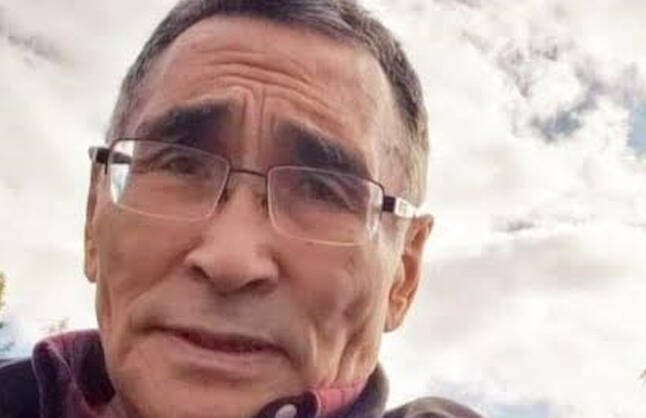The first time the flag of Nunavut was officially raised in Iqaluit on April 1, 1999, is a day remembered with much pride by well-known Inuit Elder Tagak Curley of Rankin Inlet.
Curley said there’s really two parts to the process that created Nunavut. One was the fact the negotiations were primarily on the Aboriginal title. He said the federal government insisted early on that Nunavut’s public government was not negotiable. In the government’s view, it was not in the best interest of Inuit nor was it an Aboriginal right.
“At the time, most of our MLAs took it upon themselves to publicly continue to promote the idea of dividing the huge geographical territory of the Northwest Territories (NWT),” said Curley.
“That had to be persistently carried out and I was very much involved in that. I was elected to the legislative assembly of the NWT in 1979 and stayed there for eight years.
“The legislative assembly of the NWT became, at that time, sort of a public institution that was able to engage with the public on whether or not to support the idea of dividing the territory.”
Curley said the land claims issue was not really a part of the deal until the negotiations were concluded.
He said, at that time, the NWT MLAs suggested to the federal government that because it was not negotiable, the public government could be enacted by then prime minister Brian Mulroney as a separate bill, as his own initiative to create the Inuit territory.
“We were, by gosh, somewhat surprised when he agreed to that and, as they say, the rest is history.
“The two bills were introduced at, pretty much, the same time, with one being their (the federal government’s) own initiative, the Nunavut Act. The other one saw us very much engaged with negotiations on Aboriginal title, the Nunavut Land Claims Agreement, over a 20-year period.
“In the beginning, I never thought the land claims would be at where they are now. We gave up a lot in surrendering the title and use of land, which we call the extinguishment of the Inuvialuit Agreement,” he recalled.
On June 5, 1984, the Committee for the Original Peoples’ Entitlement, representing 2,500 Inuvialuit of the Mackenzie Delta and adjacent Arctic Coast became the first Indigenous group in the Northwest Territories to settle a comprehensive land claim, the Inuvialuit Final Agreement.
“We had to compromise on that,” said Curley.
“Then-prime minister Brian Mulroney was woken-up at three o’clock in the morning by then-minister of Indian Affairs and Northern Development Tom Siddon, when the final drafts were negotiated, including the compensation clause, and the prime minister embraced Nunavut.”
Curley said he was not particularly involved with the festivities in Iqaluit on April 1, 1999, when Nunavut officially became its own territory, even though he was living there at the time.
He said a tragic family event prevented that from happening.
“My late brother-in-law passed away after going missing out on the land near Baker Lake at about the same time. So, of course, we just couldn’t jump forward to celebrate with the rest of the public, given the circumstances.
“I was always convinced that land claims, itself, was simply not enough. We had to gain some other greater public involvement, so the idea of division – dividing the NWT – was the best choice for us.
“Also, with the Inuvialuit extinguishment, we needed a better offer from Canada and that was the creation of the Nunavut Territory and Inuit forming [their own government].
“As we speak today, I have not been disappointed. Nunavut is maturing slowly and we must be patient with the ongoing process.”
Curley said all those involved with the creation of Nunavut have left a legacy that he believes will stand forever.
He said he will always remember watching the flag of Nunavut raised for the first time.
“It was such an emotional day (April 1, 1999) because it was something that we either lost or gained something from. Nunavut did that with the complex land claims agreement.
“Since I was living in Iqaluit at the time – the infrastructure program was going full blast – I saw the flag of Nunavut being raised at the Nunavut legislative building for the first time; where it is to remain forever.
“That was a very, very big deal to so many of us. It was something that we will never forget. We have gone through a kind of roller-coaster ride of emotions since then because we don’t have the numbers (of population), only one MP and so on.
“It was quite significant for us to see a permanent symbol of Inuit being raised with the promise of much-greater involvement with public affairs.”
